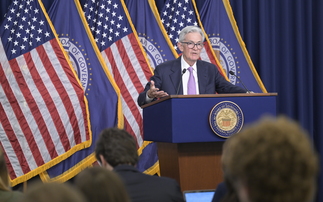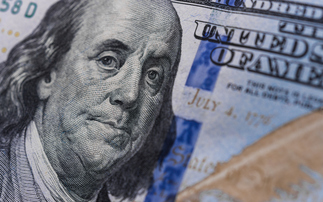
Q: With the US unemployment rate at 3.6% and GDP growing, why are you concerned about a recession and rise in corporate defaults?
Philip: As high yield managers, we are always cognizant of downside protection, whether our concerns surround a company's individual competitive dynamics, or a broader pull-back in consumer and business spending that could impact the companies we invest in. Even though the odds of a recession have receded in recent months and a soft landing is increasingly possible, our bias is toward managing downside scenarios.
Four key indicators have recently caused us to be more vigilant since they all have good track records of predicting recessions in the short-to-medium term: the inverted US Treasury yield curve, tougher lending standards according to the US Federal Reserve's Senior Loan Officer Opinion Survey, a weak and falling Leading Economic Index and falling money supply.
Q. Has the default cycle started, or is it still in the distant future?
Niklas: We believe the default cycle has already begun, and default rates have been inching higher for the past few months. Higher financing costs are starting to weigh on companies with overleveraged balance sheets and more challenged business outlooks. However, the pace of rising defaults has been slow, and is consistent with our view that the cycle may be more prolonged but less painful than in the past, with a lower peak and lower level of cumulative defaults among high yield bond issuers.
Q: How did high yield fare in previous default cycles?
Philip: In each of the last three modern credit cycles (1989-1991, 2000-2002 and 2007-2009), the cumulative three-year default rate reached about 15% of aggregate US corporate debt across investment grade, high yield, and bank loans (this excludes the brief COVID recession of 2020).1 Historically, high yield bore the brunt of these losses. Cumulative three-year high yield default rates peaked at 40% in the early 1990s, 55% in the early 2000s, and 30% during the global financial crisis (GFC).2
In the 14 years after the GFC, the cumulative three-year US corporate credit default rate did not exceed 5%.3 Ultra easy monetary policies around the world have undoubtedly played a key role in moderating recessions since the GFC. However, with the post-pandemic bout of inflation, monetary authorities need to be more constrained and balanced than they have been in recent downturns. Monetary easing to preempt a potential surge in defaults must now be weighed against the impact of easing on inflation.
Q: Do you think the next default cycle will look similar to previous ones, or different?
Niklas: We think high yield is currently better positioned for the next downturn because of its recent default history and, importantly, its current makeup. High yield's history of cyclical challenges and, recently, its higher exposure to energy bonds that led to a disproportionate number of defaults in 2015-2016, made high yield a less favored asset class. As a result, investors have demanded higher yields in the past five-to-ten years to underwrite the same risks when compared to other leveraged asset classes, such as private credit and bank loans. Issuers choose where they borrow, and in recent years they have chosen the bank loan or private credit markets over high yield for their easier and cheaper terms.
This can be seen in the relative growth of these asset classes in the last several years. According to JP Morgan, the total US leveraged finance market (high yield, syndicated loans and private debt) has grown to USD3.4 trillion.4 Since 2001, the high yield bond market has approximately doubled in size from USD657 billion to USD1.4 trillion.5 But the syndicated loan market has grown from less than USD200 million to nearly USD1.5 trillion, and private debt has grown from a negligible amount to over USD600 billion today, with a significant amount of the growth occurring during the period of depressed bond yields due to extremely accommodative central banks.6
A positive by-product of high yield's slower growth is a better cohort of issuers going into a possible downturn, compared to the past. This gives us comfort that the high yield default rate will be potentially lower and recovery rates will be potentially higher than in previous cycles.
To illustrate, several market-wide metrics reflect high yield's overall improvement:
- High yield leverage is near the lowest levels seen since 2013 and interest coverage levels are higher, though they have fallen with the rise in interest rates (Figures 1 and 2).
High yield credit metrics - Strong balance sheets, modest deterioration, significant cushion
- The percentage of the high yield market rated BB is near a record high, and the percentage rated CCC is significantly below historical levels (Figure 3).
- The percentage of the market that consists of secured bonds is at a record high, representing 29% of the US high yield market by par, as of March 31, 2023 (Figure 4).
- The high yield market currently does not suffer from sector concentration, unlike in past downturns when peak default rates were skewed by high default rates within the largest sectors of the high yield market (Figure 5).
- High yield issuers have grown in size, leading to potentially improved credit prospects. The average EBITDA of high yield issuers grew from around USD500 million in 2011 to over USD1 billion today, as private credit and loan markets lured smaller issuers away with better terms.7 We believe larger companies have several advantages, such as more diversified businesses, often with multiple business lines that can allow one business to offset weakness in another division, and more opportunities to cut costs to weather downturns. As a result, all things being equal, we believe larger companies tend to be better credits than smaller credits, and the current high yield market is skewed toward larger credits.
High yield composition - Composition changes have improved the credit quality of the asset class
In summary, we think the high yield market is currently well positioned to post a lower cumulative default rate, a lower peak rate and a modestly higher recovery rate than in previous default cycles.
Q. How does Invesco's High Yield Team handle company defaults?
Philip: Our process is designed to select companies with lower probabilities of default by focusing on asset coverage, competitive positions and business momentum. We focus much of our attention on downside protection. Our long-term approach targets companies with assets and businesses that we believe are worth more than the market values of their debt. Given this approach, we often prefer to allow our original theses to play out, believing that, over time, a company's performance will prove to the market that our original valuation was correct. As a result, we tend to prefer to hold our positions through bankruptcy. There are, of course, times when events lead us to change our thesis, in which case, we would sell down our position. When a position becomes distressed, we follow a team-based approach to working it out, led by the high yield analyst with coverage of the company. The team includes portfolio managers, back-office employees and Invesco's deep legal team. Our high yield team would join creditor committees where appropriate. In the end, our process, like all of our processes, is designed to maximize value for our clients, whether that means selling our bonds upon bankruptcy or working with other creditors to maximize bondholder recoveries.
Sources
1. Source: Bank of America Global Research. May 12, 2023.
2. Source: Bank of America Global Research. May 12, 2023.
3. Source: Bank of America Global Research. May 12, 2023. Refers to 14 years through July 31, 2023.
4. Source: JP Morgan. Data as of May 24, 2023. This does not include committed but uninvested capital, referred to as "dry powder".
5. Source: JP Morgan. Data as of May 24, 2023. This does not include committed but uninvested capital, referred to as "dry powder".
6. Source: JP Morgan. Data as of May 24, 2023. This does not include committed but uninvested capital, referred to as "dry powder".
Investment risks
The value of investments and any income will fluctuate (this may partly be the result of exchange rate fluctuations) and investors may not get back the full amount invested.
Fixed-income investments are subject to credit risk of the issuer and the effects of changing interest rates. Interest rate risk refers to the risk that bond prices generally fall as interest rates rise and vice versa. An issuer may be unable to meet interest and/or principal payments, thereby causing its instruments to decrease in value and lowering the issuer's credit rating. The values of junk bonds fluctuate more than those of high quality bonds and can decline significantly over short time periods. The risks of investing in securities of foreign issuers, including emerging market issuers, can include fluctuations in foreign currencies, political and economic instability, and foreign taxation issues.
The performance of an investment concentrated in issuers of a certain region or country is expected to be closely tied to conditions within that region and to be more volatile than more geographically diversified investments.
Important information
This document is for Professional Clients only in the UK.
All data is provided as at 28 August 2023, sourced from Invesco unless otherwise stated.
This is marketing material and not financial advice. It is not intended as a recommendation to buy or sell any particular asset class, security or strategy. Regulatory requirements that require impartiality of investment/investment strategy recommendations are therefore not applicable nor are any prohibitions to trade before publication.
Views and opinions are based on current market conditions and are subject to change.
Issued by Invesco Asset Management Limited which is authorised and regulated by the Financial Conduct Authority. Invesco Asset Management Ltd, Perpetual Park, Perpetual Park Drive, Henley-on-Thames, RG9 1HH, UK













